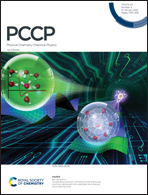Quality of force fields and sampling methods in simulating pepX peptides: a case study for intrinsically disordered proteins†
Abstract
Intrinsically disordered proteins (IDPs) are a group of proteins that lack well-defined structures under native conditions and carry out crucial physiological functions in various biochemical pathways. Due to the heterogeneous nature of IDPs, molecular dynamics simulations have been extensively adopted to investigate the conformational ensembles and dynamic properties of these proteins. However, their accuracy remains limited by the development of force fields and sampling algorithms. Here, we evaluated the quality of both force fields and enhanced sampling algorithms based on five short pepX peptides. Our results show that the more extended conformational ensembles sampled by the AMOEBA polarizable force field present a higher ability to reproduce experimental NMR observables than AMBER and CHARMM classical force fields. Moreover, a better agreement with experiments is achieved in the simulation of IaMD (integrated accelerated molecular dynamics) than in aMD (accelerated molecular dynamics). The results together indicate that the combination of AMOEBA force field and IaMD enhanced sampling might be a better choice for simulating IDPs. This work may provide important clues for developments and applications of force fields and enhanced sampling methods in future simulations of IDPs.



 Please wait while we load your content...
Please wait while we load your content...